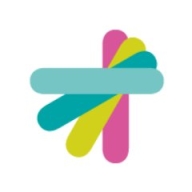

Fortify on Demand and Kiuwan are competitive solutions in application security testing. Kiuwan seems to have the upper hand in terms of feature richness and value for cost, while Fortify on Demand is noted for comprehensive support services.
Features: Fortify on Demand offers effective security testing with robust code scanning, a well-rounded analytic suite, and expansive reporting functions. Kiuwan is notable for broad integration capabilities, seamless continuous integration processes, and advanced application analysis features.
Room for Improvement: Fortify on Demand could benefit from simplifying customization, enhancing reporting capabilities, and maintaining relevance with regular updates. Kiuwan might improve its dashboard presentation, refine real-time monitoring features, and enhance user experience.
Ease of Deployment and Customer Service: Fortify on Demand boasts a guided setup with some users noting a steep learning curve but is complemented by comprehensive support. Kiuwan offers a simpler deployment process but faces mixed reviews regarding customer service responsiveness.
Pricing and ROI: Fortify on Demand involves a higher initial setup cost, yielding strong ROI through thorough analytics. Kiuwan provides competitive pricing and a favorable ROI due to efficient scanning and issue resolution, appealing to budget-conscious users.


Fortify on Demand is a web application security testing tool that enables continuous monitoring. The solution is designed to help you with security testing, vulnerability management and tailored expertise, and is able to provide the support needed to easily create, supplement, and expand a software security assurance program without the need for additional infrastructure or resources.
Fortify on Demand Features
Fortify on Demand has many valuable key features. Some of the most useful ones include:
Fortify on Demand Benefits
There are several benefits to implementing Fortify on Demand. Some of the biggest advantages the solution offers include:
Reviews from Real Users
Below are some reviews and helpful feedback written by PeerSpot users currently using the Fortify on Demand solution.
Dionisio V., Senior System Analyst at Azurian, says, "One of the top features is the source code review for vulnerabilities. When we look at source code, it's hard to see where areas may be weak in terms of security, and Fortify on Demand's source code review helps with that." He goes on to add, “Another reason I like Fortify on Demand is because our code often includes open source libraries, and it's important to know when the library is outdated or if it has any known vulnerabilities in it. This information is important to us when we're developing our solutions and Fortify on Demand informs us when it detects any vulnerable open source libraries.”
A Security Systems Analyst at a retailer mentions, “Being able to reduce risk overall is a very valuable feature for us.”
Jayashree A., Executive Manager at PepsiCo, comments, “Once we have our project created with our application pipeline connected to the test scanning, it only takes two minutes. The report explaining what needs to be modified related to security and vulnerabilities in our code is very helpful. We are able to do static and dynamic code scanning. When we are exploring some of the endpoints this solution identifies many loopholes that hackers could utilize for an attack. This has been very helpful and surprising how many vulnerabilities there can be.”
A Principal Solutions Architect at a security firm explains, “Its ability to perform different types of scans, keep everything in one place, and track the triage process in Fortify SSC stands out.”
PeerSpot user Mamta J., Co-Founder at TechScalable, states, "Almost all the features are good. This solution has simplified designing and architecting for our solutions. We were early adopters of microservices. Their documentation is good. You don't need to put in much effort in setting it up and learning stuff from scratch and start using it. The learning curve is not too much."
Software analytics technology with a breadth of third party integrations that takes into account the wealth of applications your teams are currently using.
We facilitate and encourage work between unlocalized teams. We understand the complexity of working on multi technology environments, constantly striving to increase the number of programming languages and technologies we support.
We monitor all Application Security Tools reviews to prevent fraudulent reviews and keep review quality high. We do not post reviews by company employees or direct competitors. We validate each review for authenticity via cross-reference with LinkedIn, and personal follow-up with the reviewer when necessary.